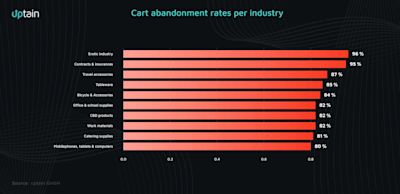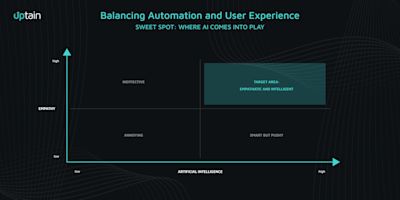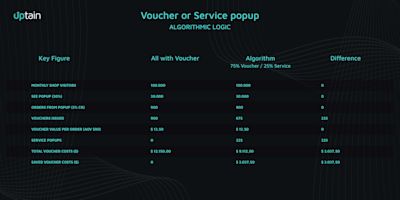
Why this matters
Cart abandonment remains one of the biggest pain points in ecommerce. More than 70 percent of all online shopping carts are abandoned before checkout, representing billions in lost revenue every year.
Traditional recovery approaches such as generic reminder emails or blanket discounts have limited effectiveness. They treat every customer the same and ignore the complexity of buyer motivations and contexts.
In today’s environment, where customers face an ever-growing number of providers and product choices, generic tactics quickly lose their impact. Shoppers increasingly demand authenticity, relevance, and a sense that brands understand their individual situation. Driven by FOBO (Fear of Better Options), consumers are increasingly likely to abandon purchases as they continuously compare alternatives. When recovery actions appear pushy, irrelevant, or interchangeable, this effect is amplified.
This makes personalized, context-aware interventions essential for effective recovery. This is exactly where Artificial Intelligence comes into play. By analyzing behavioral signals in real time and adapting to each customer’s needs, AI enables merchants to predict intent, tailor interventions, and recover sales at scale.
Cart abandonment at a glance
To understand how AI can transform cart recovery, we must first take a data-driven look at the problem itself.
On average, 67 percent of carts are abandoned on desktop. The problem is even more pronounced on mobile, where the abandonment rate climbs to 74 percent. This difference highlights how checkout usability on smaller devices is a critical battleground for reducing abandonment.
The data also shows how customers abandon their carts in practice. More than 63 percent simply leave the tab inactive, effectively walking away without closing it. Around 27 percent navigate back in the checkout flow, while 9 percent close the browser tab altogether. These behaviors illustrate that abandonment is not always an explicit decision but often the result of hesitation or distraction. So the problem is not static.

Abandonment rates have in fact risen over time. Uptain’s half-year comparison shows that rates increased from 69.75 percent in late 2023 to 72.11 percent by mid 2024, and still remain elevated at 71.72 percent in early 2025. Abandonment rates also vary strongly by industry, reaching as high as 96 percent in the erotic industry and 95 percent in insurance contracts.
Even in more mainstream sectors such as travel accessories (87 percent) or tableware (85 percent), the levels remain strikingly high. Beyond industry, price sensitivity plays a role: low-ticket baskets under $30 show the highest abandonment at 77 percent, while even mid-range baskets of $90–120 still face 72 percent. These dynamics are further shaped by timing, with late-night and evening hours showing the strongest cancellation tendencies.
Common reasons behind abandonment remain consistent. Customers leave because of unexpected costs like shipping or fees, missing payment options, overly complex checkout steps, or a lack of trust in the site’s security or no social proof. As part of preventive optimization efforts these issues can already be addressed to some extent, for example, by offering sufficient payment options or streamlining the checkout process.
According to the data in uptain’s e-reports, these insights underline that cart abandonment is a universal challenge, but also one that is highly context-dependent where generic and rigid flows quickly become ineffective and leave significant potential untapped. The specific reasons and behaviors of cart abandonment differ by device, industry, and timing, which is why merchants need adaptable and intelligent solutions.
Why AI is a game-changer in cart abandonment?
Cart abandonment has been studied for decades, but most solutions until now have been static and imprecise. Generic reminder emails or fixed discount rules can bring some customers back, but they miss the mark for many others.
AI changes this equation by analyzing patterns that go far beyond human capacity. It can identify not only who is abandoning a cart, but also why, and then intervene with the most effective action in real time.
This shift can be described as moving from guesswork to precision at scale.
AI can be predictive, spotting early signals of real exit intent such as hesitation on the payment page or switching between tabs. It can be precise, tailoring interventions to specific customer segments, whether they are service seekers, bargain hunters, or loyal repeat buyers. And it works in real time, ensuring that interventions happen at the exact right moment, whether on-site or through post-abandonment communication.
Balancing automation and user experience

Merchants often worry that AI-driven interventions might feel pushy or intrusive. Nobody wants to bombard customers with endless popups or reminder emails or sms.
This is where anti-annoyance logic comes in. AI systems can automatically apply frequency caps, respect customer context, and avoid overcommunication. For example, if a user has already received a reminder email, AI can suppress a second message until the timing feels right.
The most effective strategies combine intelligence with empathy. Intelligence ensures that the right message reaches the right person at the right time. Empathy ensures that communication feels helpful rather than disruptive.
AI in motion: key tactics against cart abandonment
AI-driven cart recovery tools as offered by providers like uptain, can be broken down into two main types of interventions: immediate and reactive actions.
Immediate actions include exit-intent popups (also known as exit-intent overlays). When AI detects that a customer is about to leave a site without completing their purchase, it can trigger an overlay tailored to that moment. Instead of a generic popup, the message can be contextual and helpful. Examples include a reassurance about shipping or return policies, a service offer such as live chat or product consultation, or a selective discount applied only if the customer is highly price-sensitive. The goal is to reduce abandonment at the exact moment it would otherwise occur.
Picture walking out of a clothing store, and instead of asking what went wrong, size, fit, service, or stock, the staff just throws a 10% voucher at everyone heading for the door. Helpful? Sometimes. Relevant? Rarely. Now imagine the opposite: knowing what customers are actually concerned about. Out of the hundreds of possible reasons to leave, what if you could identify the right one and respond with the right words, the right tone, and the right offer at exactly the right moment?
Reactive actions include AI-driven trigger emails. If the cart is abandoned, AI can still recover the sale by sending highly personalized follow-up emails. Unlike traditional reminders, these emails adapt in tone, timing, and content. Subject lines can be optimized to match customer behavior and preferences.
Product recommendations can align with browsing history. The timing of the email can be dynamic, ensuring it arrives when the customer is most likely to re-engage.

In the background, both immediate and reactive actions rely on AI-powered segmentation. By analyzing browsing patterns, price sensitivity, and past purchase behavior, AI ensures that each intervention feels relevant. A loyal customer might appreciate a service message, while a first-time buyer may respond better to a small incentive.
Why algorithmic decision-making matters
One of the biggest advantages of AI in reducing and recovering cart abandoners is its ability to decide between offering a discount or showing a service message. This choice has a direct impact on both conversion and profitability.
Example: Voucher vs. service message
Imagine a shop with 100,000 monthly visitors. Without algorithmic logic, every abandoning visitor would receive a 15 percent discount voucher configured by a static automation flow, based on a simple mouse-out trigger.

With AI-driven decision making, not every customer receives a voucher. The algorithm determines who truly needs a discount and who can be persuaded by a service-oriented message. This reduces unnecessary voucher costs by up to 25 percent.
Savings in that case through algorithmic decision making: 3,037.50 dollars per month
This calculation is only one example of the impact of algorithmic decision making.
Despite the main advantage of picking the best fit in personalized content, which we do not need to explain here because it is an obvious advantage, imagine what would happen if an algorithm could also recognize more accurately what true exit intent really is.
Instead of relying on simple mouse-out triggers or other static rules configured manually such as assuming that a scroll depth of 20 percent or a session length of 20 seconds indicates exit intent, an AI-based system combines multiple behavioral signals. These include mouse movements, time spans, tab switches, and historical data. Quick simple example: In terms of mouse movement, for a Mac user it is crucial to detect the device. On a Mac, moving the cursor to the right does not indicate exit intent, since the close button is on the left.
The system also learns continuously by combining collective, anonymized data across different shops using the corresponding software. The result is fewer false positives. In practice, this means the system avoids showing vouchers to customers who do not actually need one, for example users who were likely to complete the purchase anyway. This preserves revenue while keeping conversion levels stable.
By doing so, the accuracy of exit-intent detection can increase by up to 20 percent. This creates an additional boost on top of the first example, where the decision between showing a voucher or a service popup already resulted in significant savings.
Conclusion
Cart abandonment is inevitable, but it does not have to mean lost sales.
AI transforms the challenge of cart abandonment by predicting intent, tailoring interventions, and engaging customers at the right moment. Unlike traditional one-size-fits-all approaches, AI offers precision at scale. This leads to more conversions, preserved margins, and a better customer experience.
The key takeaways are clear. AI is here to stay and a strategic driver of revenue recovery. By combining intelligence with empathy, merchants can reduce abandonment without alienating customers. The future of cart recovery will belong to merchants who embrace AI today.

Further readings:










